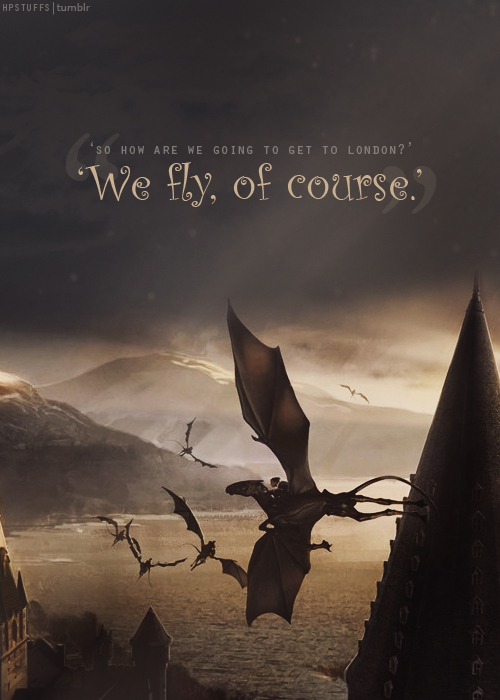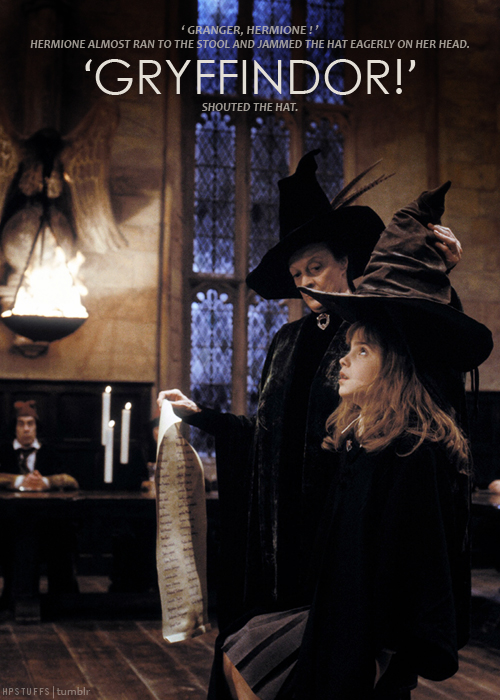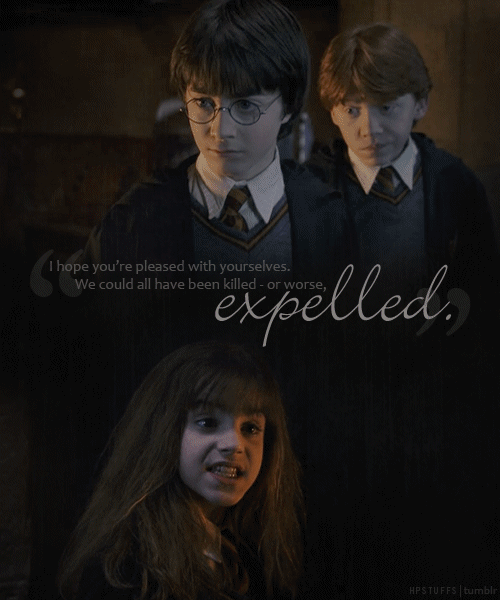
Harry Potter Psychotherapy: Grief and Thestrals
*I do not own Harry Potter, therefore, mention of characters/concepts are solely intended for educational and therapeutic gain.*
Grief and Loss
The theme of grief and loss recur throughout the Harry Potter series, ranging from sacrifices made, murder, accidental death, ambiguous loss, and loss of innocence. (*Beware of spoilers to follow.*) Death comes in all shapes and forms. Loss can be ambiguous, missing something without closure or understanding. Moving, break-ups, missing people, or long distance can often be experienced as ambiguous loss. It is common to respond to ambiguous loss through either glamorizing or depreciating. For example: Moving away from a childhood friend could bring about glamorizing thoughts, such as “she was such a wonderful friend and I will miss her a lot and may never have another friend like her again”, or depreciation, “I didn’t like her that much anyway and I’m glad to be moving away to make new friends.” Neither statement would be an accurate depiction of what it really would have been like with that childhood friend. The reality is more likely that there was a combination of both positive and negative memories with that friend.
Harry experiences ambiguous loss every summer away from Hogwarts. He glamorizes his experiences there and depreciates his residence at the Dursley’s (although the Dursley’s do appear to make his life less enjoyable). Harry knows Hogwarts is still there and that he will get to return, however, he feels that he has no current access to it, thus contributing to his lowered mood and fixation on his problems. He even misses correspondence with his friends between years 1 and 2, and between years 4 and 5. Harry also experiences a loss of innocence and freedom through finding out about the prophecy about himself. Harry grieves multiple deaths throughout the series, including, his parents, Sirius, Remus, Tonks, Hedwig, Alastor Moody, Dumbledore, Dobby, Fred Weasley, Cedric Diggory, etc. The first impactful death experienced forms a foundation. Each death to follow gets added on to that grieving process, mourning multiple deaths at a time. Alan Wolfelt, a Grief Specialist at The Center for Loss & Life Transition, believes that there is a difference between grief and mourning. Grief refers to the thoughts and feelings held on the inside after someone dies. Mourning refers to the outward process of expressing those thoughts and feelings. Wolfelt teaches that everyone grieves but not everyone mourns, yet the key to healing is through mourning and expression. Harry is notoriously stubborn regarding expressing his thoughts and feelings with others. Harry mostly demonstrates the act of grieving throughout the books, not mourning.
J.K. Rowling utilized Thestrals to symbolize the change or loss of innocence accompanied with witnessing death, and are described as black reptilian horses with skeletal bodies and leathery wings like a bat’s. Thestrals can only be seen by individuals who have watched/seen a person die. To everyone else they appear invisible, often providing an illusion of carriages pulling themselves. To anyone who has seen the act of death in person, it is a life-changing event. While death is a natural part of life, witnessing death can often be experienced as a loss of innocence, for there is no denying it’s eventual grasp when you see it directly. Harry lost that innocence when he witnessed Cedric’s death, old enough to understand the gravity and finality. Thestrals are also described as being beautiful yet grotesque, frightening, or strange. In comparison, death is beautiful because it sweetens the value of life, grotesque due to the pain of dying for self or others, and frightening due to the unknown mystery of what happens after.
The deathly hallows (more specifically the resurrection stone) also touches the subject of death. For individuals with immense grief (like Harry), the resurrection stone is likely a tempting idea. The problem with the resurrection stone is that no one can actually come back from the dead, instead, “spirits” return as a shell without feeling tied to the living world. The desire to resurrect the dead is an example of bargaining or pleading, a common part of grief that focuses on undoing what was done instead of moving forward with what has already been done. It is healthy to express those feelings to trusted listeners, friends, or family. There is no such thing as a right or wrong time frame for grief/mourning. I often hear comments like, “I should be over this by now” or “I just need to move on”. Those statements reflect societal and familial pressures based on inappropriate and poorly-informed norms regarding death and grief. There are no short-cuts to the grief/mourning process. The only way to heal is by moving toward the pain head-on, not going around it. Yes, it will hurt and feel uncomfortable, but that is why it is so important. The pain and hurt doesn’t go away when you avoid it or push it down, it just accumulates until it can be released in some other form at a later, and most certainly, inconvenient time.
How Can I Tell If I’m Depressed or Grieving?
Many of the symptoms are the same, including: sadness, self-isolating, loss of appetite, hypersomnia, insomnia, loss of interest in things usually enjoyed, frequent tearfulness, thoughts of hopelessness, worthlessness, helplessness, or death. The DSM-V considers grief enduring longer than two weeks after experiencing a death as a depressive episode. Many mental health professionals disagree with that time frame, including myself. Grief often lasts much longer than two weeks. However, some individuals start with grief but then if they do not mourn and process the death then it can turn into a depressive episode. A depressive episode can also be triggered by many different situations other than death. If you or someone you know is grieving/mourning and does not feel that they are healing, they should seek out help from a mental health professional.
What Can I Do to Mourn?
- Read a book written by Alan Wolfelt. He has written many books on grieving specific types of losses, such as suicide, loss of a parent, loss of a child, loss of a pet, etc. You might also try one of his general books on grief/loss. Here is his bookstore: https://www.centerforloss.com/bookstore/
- Explore your current support system. Do you have anyone in your life who listens and supports? Avoid people who make comments such as, “It’s time to move on”, “You were lucky you had the time you were given with them”, “they’re in a better place now,” or “it was all part of god’s plan”. Those good-intention comments are made when an individual is uncomfortable sitting with you in your grief. A true support will not only listen, but will not shut down your feelings. They should encourage you to talk about your grief and the person lost until you feel you are ready to stop. Make a conscious effort to surround yourself with healthy support systems (and it doesn’t always include family members).
- Keep a journal with you. Write about your mourning process. Perhaps write down your memories with that person. You could choose to do some form of art project to accomplish the same goal.
- Create an altar like Mexican culture does when celebrating the Day of the Dead. The altar might include the deceased person’s favorite food, drinks, objects, photos, scented candles, music, flowers, clothes, etc.
- Take care of your body. The body is often neglected when grieving a loss, but that will only make symptoms worse. Take time off from work, try to get 8 hours of sleep per night, make sure you eat healthy meals, take relaxing baths or showers, get a massage, etc.
Harry Potter Psychotherapy: The Pensieve
A pensieve is a rare stone basin that holds memories. Imagine you have a pensieve like Dumbledore’s and think of or write down the following:
- What does the pensieve look like?
- What does it feel like against your hand?
- Can you feel the power emanating from it? Does it pull you forward?
- Imagine you find yourself falling into a memory.
- The memory looks familiar. You know it has to do with your grief.
- Who is there and what is happening?
- Do you notice any details about your memory?
- Are you watching yourself in your memory?
- What are the feelings experienced by individuals in the memory?
- What are your feelings as an observer of your memory?
- What is important about this particular memory?
- You might find that you have more memories to observe when this memory concludes. If so, reflect on the above questions each time. Consider writing down your responses.
Harry Potter Psychotherapy: Riddle’s Diary
In Harry Potter and the Chamber of Secret’s, Harry encounters Tom Riddle’s (Voldemort’s) Diary. It is blank and Harry thinks it is useless until he realizes that the ink is completely absorbed in the pages. When he writes in the diary his words disappear and the diary answers in Tom Riddle’s hand-writing. The diary is actually a horcrux holding a piece of Voldemort’s soul and memories. Imagine that your deceased loved one has left you a diary just like it, except it belonged to them and not Tom Riddle. Reflect on the following questions:
- What does the diary look like and how does it feel in your hand?
- What would you ask your loved one in the diary?
- What would you want to say?
- How would they answer and respond?
- What would the hand writing look like?
- How does it feel to imagine communicating with their memory in the diary?
- Are you surprised by the responses you would get back from the diary?
- Are there any images or memories that the diary would try to show you?
- If the situation was reversed and it was your memory/soul in the diary and your loved one left to ask the questions, what would they say and how would you respond?
- How do those two versions compare to each other?
- What does your loved one want you to know?
- Remember that you can return to “Riddle’s” Diary at any time and repeat the above steps.
Please note that these therapy exercises do not qualify as stand-alone treatments and it is recommended that you seek help from a licensed professional mental health provider.
Contact me with questions or to schedule an appointment:
E-Mail: jmorris@jmmhc.com
Voicemail: (248) 327-4643







Recent Comments